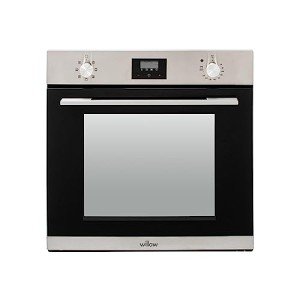You'll Be Unable To Guess Build In Oven's Tricks

본문
The Ultimate Guide to Built-in Ovens: Enhancing Your Kitchen Experience
Built-in ovens have actually become a popular option in contemporary kitchens, using a blend of functionality, design, build in oven and convenience. Unlike standard freestanding ovens, built-in ovens are integrated seamlessly into cabinetry, offering a streamlined look that can enhance the visual appeal of any kitchen. This post explores the various types of built-in ovens, their advantages, setup factors to consider, and upkeep pointers.
Understanding Built-in Ovens
Built-in ovens are designed to be set up directly into kitchen cabinetry, enabling for a more customized kitchen setup. They usually can be found in two main types: single and double ovens.
Types of Built-in Ovens
Single bulit-in ovens: These systems provide one cooking compartment, perfect for smaller sized kitchen areas or homes where cooking demands are modest.
Double Ovens: As the name suggests, these units include 2 separate cooking compartments, allowing users to cook several meals at various temperatures concurrently. This is particularly helpful for large households or those who often captivate guests.
Steam Ovens: These ovens prepare food utilizing steam, which can help maintain wetness and nutrients. Steam ovens are gaining popularity due to their health benefits.
Combination Ovens: These versatile appliances combine the functions of a regular oven and a microwave, making them best for quick cooking and reheating.
Key Features to Look For
When considering a built-in oven, there are numerous features that can enhance your cooking experience:
Smart Technology: Many modern built-in ovens come geared up with smart technology, enabling users to control their oven remotely via smartphone apps. Features consist of preheating the oven, adjusting cooking times, and monitoring cooking progress.
Self-Cleaning Functions: Built-in ovens with self-cleaning abilities can save effort and time in kitchen upkeep.
Convection Heating: This function circulates hot air for even cooking, making it perfect for baking.
Security Features: Look for models equipped with functions like cool-to-the-touch oven doors and automatic shut-off choices for included security.
Benefits of Built-in Ovens
Visual Appeal: Built-in ovens provide a smooth and modern-day look that can improve the general design of a kitchen. They can be integrated oven into kitchen cabinetry, making them less invasive than freestanding models.
Space Efficiency: Built-in ovens enhance kitchen space, particularly in smaller cooking areas where every inch counts. They can be put at eye level, making it much easier to monitor cooking without flexing down.
Enhanced Functionality: With their innovative functions, built-in ovens provide enhanced cooking experiences and increased performance compared to conventional ovens.
Setup Considerations
Setting up a built-in oven needs cautious preparation and factor to consider. Here are some bottom lines to keep in mind:
Space Requirements: Ensure that the picked oven fits snugly into the readily available cabinet space. Measure the measurements precisely, representing ventilation and clearance requirements.
Electrical Requirements: Built-in ovens typically need a dedicated electrical circuit. Seek advice from an electrical contractor for correct installation.
Ventilation: Proper ventilation is important for ideal oven efficiency. Confirm that the installation location has adequate ventilation to prevent getting too hot and ensure safe operation.

Professional Installation: While DIY installation may appear tempting, enlisting the aid of an expert can make sure that the oven is installed properly and securely.
Setup Steps
| Installation Step | Description |
|---|---|
| Step 1: Measure | Step the cabinet opening for your oven. |
| Action 2: Prepare | Prepare the electrical outlet and ventilation choices. |
| Action 3: Connect | Link the oven to power, making sure all precaution are complied with. |
| Step 4: Secure | Protect the oven within the kitchen cabinetry, using appropriate screws and brackets. |
| Step 5: Test | Run a test to ensure the oven is working properly. |
Maintenance Tips
Routine maintenance can extend the life of your built-build In oven - https://Atavi.com/share/X2ypk8z10ng90, oven and make sure ideal efficiency. Here are some maintenance tips:
Clean Regularly: Wipe down the oven exterior and tidy the interior routinely. Usage self-cleaning functions where readily available.
Inspect Seals: Ensure that door seals are undamaged to preserve effectiveness and cooking performance.
Monitor Performance: Pay attention to how your oven functions-- if you notice uneven cooking or unusual noises, it may require expert servicing.
Follow Manufacturer Guidelines: Always abide by the maintenance guidelines provided by the maker. This can assist prevent concerns and guarantee that warranties remain valid.
FAQs about Built-in Ovens
What is the difference in between a built-in oven and a freestanding oven?
- Built-in ovens are integrated into cabinets, using a streamlined appearance, while freestanding ovens are standalone appliances that can be positioned anywhere in the kitchen.
Do built-in ovens require more maintenance than routine ovens?
- Not always. Upkeep depends on usage and cleansing habits more than the kind of oven. Regular care is essential for all ovens.
Can I set up a built-in oven myself?
- While it is possible to install a built-in oven yourself, it is recommended to work with a professional to make sure safe and precise setup, especially relating to electrical requirements.
What are the average costs of built-in ovens?

- Expenses can differ substantially based on brand name, functions, and requirements. Fundamental designs might start around ₤ 800, while high-end models can go beyond ₤ 3,000.
Are built-in ovens energy-efficient?
- Many modern built-in ovens are created to be energy-efficient. Try to find designs with an ENERGY STAR certification for the best efficiency.
In conclusion, built-in ovens are an outstanding addition to any modern kitchen, combining aesthetics with performance. By comprehending the different kinds of built in range-in ovens, their functions, and the associated installation and upkeep requirements, house owners can make an educated decision that enhances their cooking experience and overall kitchen style. As cooking technology evolves, built-in ovens are likely to play an integral function in the future of home kitchen areas, guaranteeing scrumptious meals are prepared with ease and benefit.







댓글목록0
댓글 포인트 안내